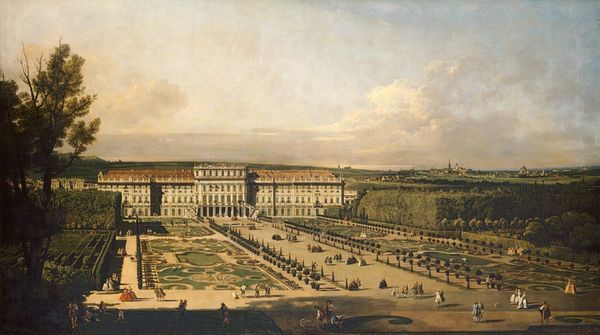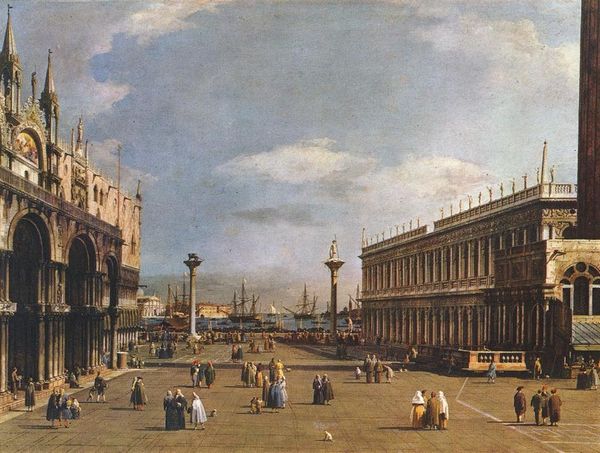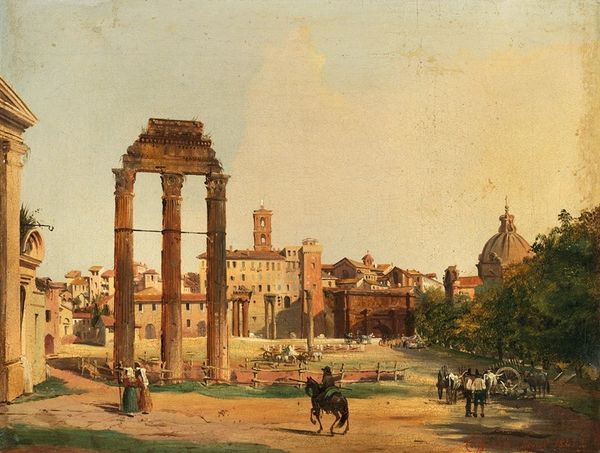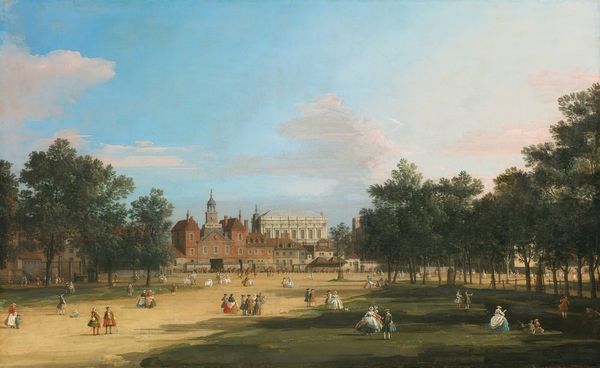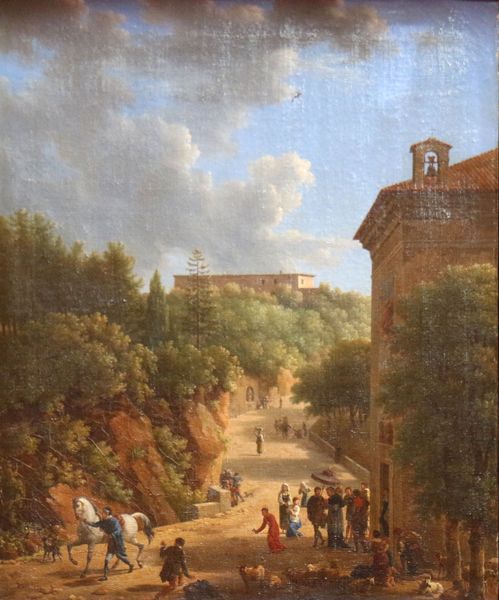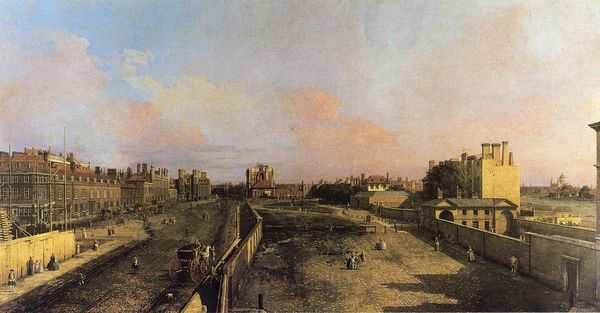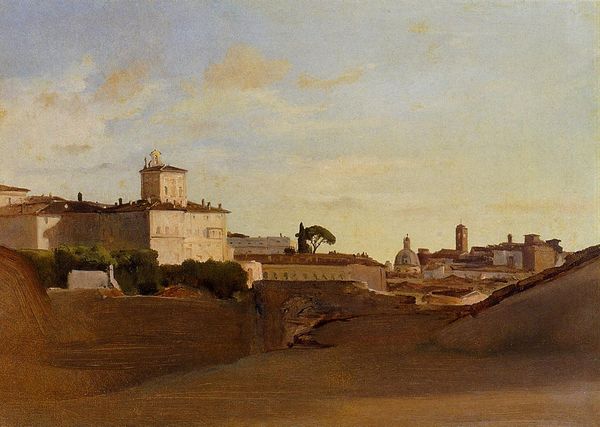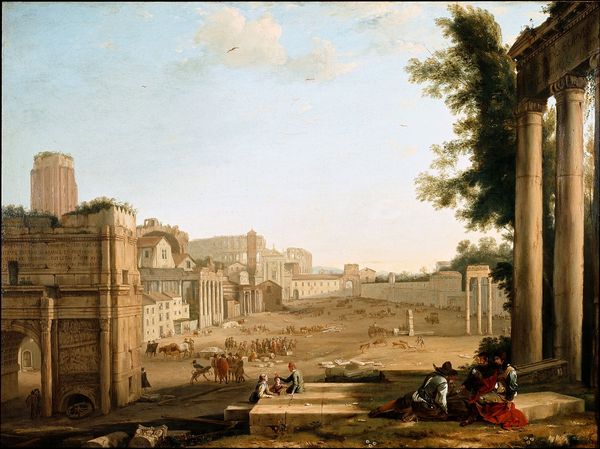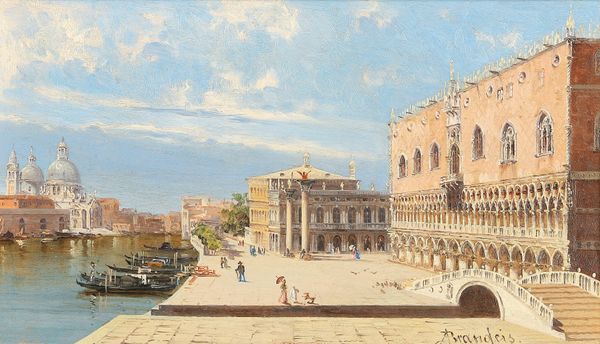
Copyright: Public Domain: Artvee
Editor: Here we have Francesco Guardi's "The Garden of Palazzo Contarini dal Zaffo," painted around the late 1770s. There's something about the airy lightness of the brushstrokes that gives it a slightly melancholic feel, like looking back at a beautiful dream. What catches your eye when you look at it? Curator: You know, it’s funny you say that – “melancholic” is spot on! For me, it’s all about that faded grandeur. Guardi is less concerned with strict architectural accuracy than capturing the *feeling* of Venice. Look how he almost lets the buildings dissolve into the light. It's a memory of Venice, wouldn't you say? What do you make of the figures in the garden? Editor: They seem so small, almost incidental, which adds to that feeling of faded importance. Are they meant to be anyone in particular? Curator: Possibly. Or perhaps they're just staffage—elements to give scale and life to the scene, not specific portraits. Consider this: Venice at the time was facing economic decline. Guardi is painting a paradise perhaps already slipping from their grasp, with these people populating, relishing in what they still had at their disposal. Notice the contrast with the Rococo style overall. See it? Editor: Now that you point it out, I see how the elegance of the Rococo style kind of clashes with the subtle decay. So it’s not just a pretty picture; it's a comment on Venetian society? Curator: Absolutely! It's like a beautiful swan song. A party right before the ship is scheduled to hit an iceberg. Does it resonate more with you now? Editor: It really does. It makes you think about how nothing stays the same, even beautiful gardens. I'll definitely look at Guardi differently now! Curator: Me too. There is nothing like pondering how society can transform the most refined and most bucolic settings. Thanks for making this an enlightening experience!
Comments
No comments
Be the first to comment and join the conversation on the ultimate creative platform.
